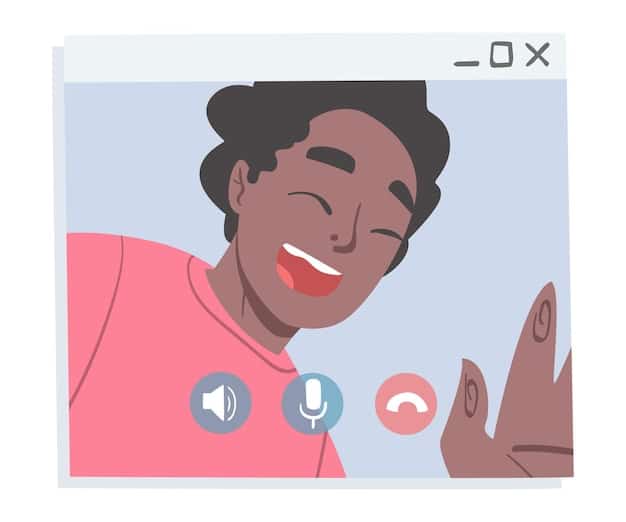Mastering Online Introductions: Digital Networking Etiquette

Mastering the art of the online introduction involves understanding and implementing digital networking etiquette to create impactful connections and build strong professional relationships in the digital age.
In today’s hyper-connected digital landscape, making a strong first impression online is more critical than ever. Mastering the art of the online introduction: networking etiquette for the digital age can significantly impact your professional and personal relationships.
The Importance of a Strong Online Introduction
The initial online interaction often sets the tone for all future engagements. Understanding why a strong online introduction matters can transform your approach to digital networking.
First Impressions Matter Online
Just as in face-to-face encounters, first impressions online are crucial. They can determine whether someone engages with you further or moves on. A well-crafted introduction demonstrates respect and confidence.
Building a Personal Brand
Your online introduction contributes significantly to your personal brand. It’s your chance to showcase your skills, values, and personality. Make sure it aligns with your professional goals and aspirations.
Neglecting the art of the online introduction can lead to missed opportunities and ineffective networking. Your digital presence shapes how others perceive you, making it essential to invest time and effort in crafting a compelling introduction. Embracing digital etiquette ensures that your online interactions are respectful, professional, and effective.
- Highlight your unique value proposition.
- Use professional language and tone.
- Show genuine interest in connecting.
A strong online introduction is more than just a formality; it is a strategic tool for building relationships and achieving your professional goals.

Crafting Your Perfect Online Introduction
Creating an effective online introduction involves several key strategies. These strategies ensure that your message is well-received and achieves its intended purpose.
Know Your Audience
Tailoring your introduction to your audience is essential. Understanding their interests, needs, and communication style helps you craft a message that resonates effectively.
Personalize Your Message
Avoid generic templates. Personalize each introduction by referencing something specific about the person or their work. This shows that you’ve done your research and are genuinely interested.
- Refer to a recent article or project they’ve worked on.
- Mention a shared connection or interest.
- Acknowledge their expertise in a specific area.
Personalizing your message not only makes it more engaging but also demonstrates that you value a genuine connection over a superficial exchange. By taking the time to customize your introduction, you increase the likelihood of a positive response and the potential for a meaningful relationship.
By following these guidelines, your online introduction will be well-received, and it sets a positive tone for future interactions.
Essential Elements of an Introductory Message
The content of your introductory message can either draw someone in or turn them away. Therefore, it is important to include essential elements.
A Clear Subject Line
The subject line is the first thing someone sees, so make it clear and compelling. It should indicate the purpose of your message and encourage the recipient to open it.
A Concise and Engaging Opening
Get straight to the point. Begin with a brief, engaging opening line that captures attention. Explain why you’re reaching out and what you hope to achieve.
A well-structured introductory message enhances your chances of forging a successful connection. It enables you to make a memorable first impression. By ensuring each element is carefully considered, you can communicate your value and intentions effectively.
- Use a professional tone.
- Highlight common interests.
- Provide context for your connection request.
Incorporating these elements will help you leave a lasting impression and foster meaningful networking opportunities. It can demonstrate your professionalism.

Choosing the Right Platform
The platform you choose for introducing yourself can significantly affect the reception of your message. Each platform has its own etiquette and user expectations. Therefore, it is important to choose the right one.
LinkedIn is ideal for professional networking. Use it to connect with colleagues, industry experts, and potential employers. Make sure your profile is up-to-date and professional.
Email is suitable for more formal introductions. It allows for a detailed message, but it’s important to keep it concise and respectful. Avoid sending mass emails or spamming inboxes.
Different platforms serve different purposes, and tailoring your approach can significantly enhance your chances of success. By considering the context and etiquette of each platform, you demonstrate respect for your audience and increase the likelihood of building a meaningful connection.
- Understand the cultural norms of each platform.
- Be mindful of privacy settings.
- Adjust your communication style accordingly.
By selecting the right platform, you are able to demonstrate consideration and effectiveness.
Dos and Don’ts of Online Introductions
Navigating the world of online introductions requires a keen understanding of what works and what doesn’t. This involves adhering to best practices that can significantly improve your networking outcomes.
Dos
Always be respectful, professional, and genuine. Research the person you’re contacting and tailor your message accordingly. Follow up if you don’t receive a response, but respect their decision if they choose not to connect.
Don’ts
Avoid sending generic or spammy messages. Don’t make demands or assume familiarity. Refrain from excessive self-promotion or negativity.
By adhering to these guidelines, you’re more likely to establish meaningful connections and build lasting relationships. Thoughtful and considerate behavior not only enhances your personal brand but also promotes a positive and respectful online environment.
- Follow up with gratitude and appreciation.
- Offer value to the other person.
- Engage in meaningful conversations.
Mastering the dos and don’ts is critical to navigate digital networking.
Following Up and Maintaining Connections
The initial introduction is just the beginning. Following up and nurturing connections are vital for building meaningful and lasting relationships.
Send a Thank-You Note
After making a connection, send a brief thank-you note expressing your appreciation. This strengthens the bond and keeps the door open for future interactions.
Stay Engaged
Like and comment on their posts, share relevant articles, and offer support. This shows that you’re genuinely interested in their work and accomplishments.
Sustaining these interactions over time can result in valuable partnerships, mentorships, and collaborations. By actively nurturing your network, you’re not only strengthening your own professional standing but also contributing to a supportive and collaborative community.
- Remember important dates and milestones.
- Share valuable insights and resources.
- Offer assistance and support when possible.
Following up is an essential element of digital networking today.
| Key Element | Brief Description |
|---|---|
| 👋 Personalized Introduction | Tailor your message to the individual. |
| 🎯 Clear Subject Line | State the purpose of your message. |
| 📧 Platform Choice | Use the most appropriate channel. |
| 🤝 Following Up | Maintain engagement for lasting connections. |
Frequently Asked Questions (FAQ)
▼
A strong online introduction sets the tone for future interactions, helps build a positive personal brand, and significantly impacts professional relationships. It shows confidence and respect.
▼
Personalize your message by referencing something specific about the person or their work. Mention a shared connection, recent article, or express admiration for their expertise to demonstrate genuine interest.
▼
Essential elements include a clear subject line, a concise and engaging opening, a brief explanation of why you’re reaching out, and context for your connection request, ensuring the message is professional and respectful.
▼
LinkedIn is ideal for professional networking, while email is suitable for more formal introductions. Each platform has its etiquette, so choose based on the nature of the connection and the expected communication style.
▼
Send a thank-you note expressing your appreciation. Stay engaged by liking and commenting on their posts, sharing relevant articles, and offering support to foster a lasting and meaningful relationship.
Conclusion
Mastering the art of the online introduction is crucial in the digital age. By understanding digital etiquette, personalizing your messages, and choosing the right platform, you can build meaningful connections and enhance your professional network. Following up and staying engaged are essential for maintaining these relationships and fostering long-term success.





